It’s Saturday! That means it’s time for a chat about tabletop RPGs! What better way to kick things off than by talking about the grand-daddy, especially considering that there’s something cool brewing in the world of Dungeons & Dragons! Truthfully, when isn’t there?
5th edition, now 6 years into its run, has been riding higher than the venerable tabletop RPG has, well, ever! There’s been no shortage of cool environs and campaign support from Wizards, and the campaign settings have been an embarrassing wealth of diverse riches.
Last year saw 3rd edition favorite, Eberron make a return, and prior to that, Wizards crossed over into Magic: The Gathering territory by introducing the Ravnica campaign setting. Venerable faves like the Forgotten Realms and Ravenloft have also been represented. Combine that with new efforts like Theros, and third party offerings like Matthew Mercer’s Exandria, and lets just say you’d be hard pressed NOT to find a campaign setting that appeals to you.
What’s exciting though, especially for those of us who were around for AD&D 2nd edition and that first “Golden Age”, is that Wizards of the Coast exec producer Ray Winninger announced on a recent D&D Celebration stream, that at least THREE CLASSIC SETTINGS will be returning for the fifth edition! This is some crazy exciting stuff for us old school dice-chuckers. The mid-late ’80s and early ’90s saw a veritable ton of awesomely original, creative fantasy settings churned out in boxed set expansions or hardcover gazetteers.
Because I love some of these settings so much, and because I felt the need to revisit them in rambling fashion, I felt I should have some fun and deep dive into some of the coolest fantasy concepts to ever grace tabletop gaming. Join me as we explore the varied worlds of Dungeons & Dragons, and discuss the odds of one or more of these making a return. I will say this, I’ve ignored the bizarre offshoots that really barely qualify as a setting (No Red Steel, no Court of Wyrms, no Birthright, they were more concepts than settings anyway), and I’ve intentionally avoided the very early (read: Blackmoor) stuff unless it was re-visited in the golden age (1984-1994).
I’ve also included a “likely to be revisited by Wizards in 5th Edition” score (out of 10). It’ll be fun to look back on this and see how wrong I was.
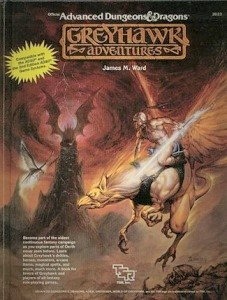
GREYHAWK
Originally published as a campaign setting “boxed set” in 1983. Greyhawk has one important distinguishing feature, lineage. Greyhawk (or Castle Greyhawk) was the first baked in setting for Dungeons & Dragons, created, and further developed by none other than Gary Gygax. It was put to bed for most of the ’80s, resurrected in time for 2nd edition AD&D with the excellent GREYHAWK ADVENTURES hardcover (my intro to the setting) and has been pretty well dormant ever since.
As a fantasy setting, it’s a little sparse, and there’s not much there that really distinguishes it in the face of other campaign settings. Generic is the term I’d use, not that there’s anything wrong with that. There’s an awful lot of history here, and some much loved, classic adventuring modules came from this particular corner of TSRs history. The lineage of it being the first “real” campaign setting, and that near blank canvas could make this one ripe for rediscovery, and further development. As a classic “vanilla fantasy” setting, it could make for some wonderful swashbuckling adventures without all of the bloat and lore that comes with something like the Forgotten Realms.
Likelihood of being revisited? 9 (out of 10)
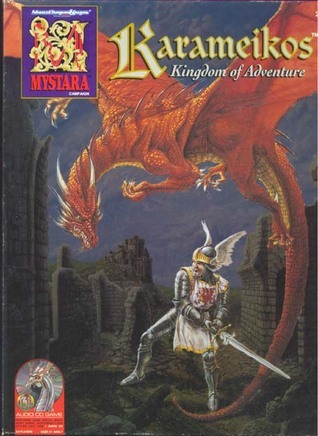
MYSTARA/THE HOLLOW WORLD/THE SAVAGE COAST
Here we go. Getting messy already. Mystara, like Greyhawk, has the distinguishing trait of being very very old. It began life as the default setting for “original” (non-Advanced) Dungeons & Dragons. AD&D had Greyhawk, D&D had “The Known World”, this Known World would be further developed, and would have additional settings, The Hollow World, and the Savage Coast integrated sometime in the ’80s. By 1987, Mystara was officially its name. The “real” original first setting, Dave Arneson’s BLACKMOOR was integrated into Mystara as an ancient civilization at one point, and it was last seen (from what I can recollect) in the ’90s with the (craptacular) RED STEEL boxed set.
Mystara is a grab bag; The colonial exploration of the Savage Coast’s frontiers, to the Edgar Rice Burroughs inspired Hollow World, to three distinct continents based loosely on distinct ancient cultures, it’s a wealth of campaign hooks, and it could be a perfect “Swords n Sorcery” alternative along the lines of Robert E. Howard’s Conan to the more traditional “High Fantasy” of other D&D settings. It also has that “red-box” legacy to draw on, and it’s never really gotten the love it deserves from TSR. It’s also not so tied to legacy and memory as something like Greyhawk, which might give modern designers a bit more grace with tossing out the bland vanilla flavors in favor of being more imaginative with developing it for a 21st-century tabletop game. It surely doesn’t have the nostalgic appeal of something like Greyhawk or Dragonlance, being all but forgotten by most. I for one would easily dive into this one, I’m sure the Old School Revival folks would gobble it down as well! Hey WIZARDS, if you’re looking for a creative for this bad boy – put me on your speed-dial.
Likelihood of being revisited? 8 (out of 10)
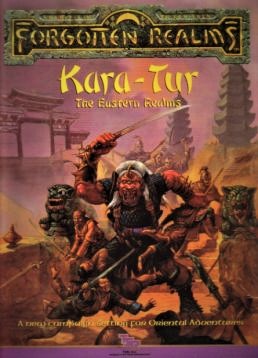
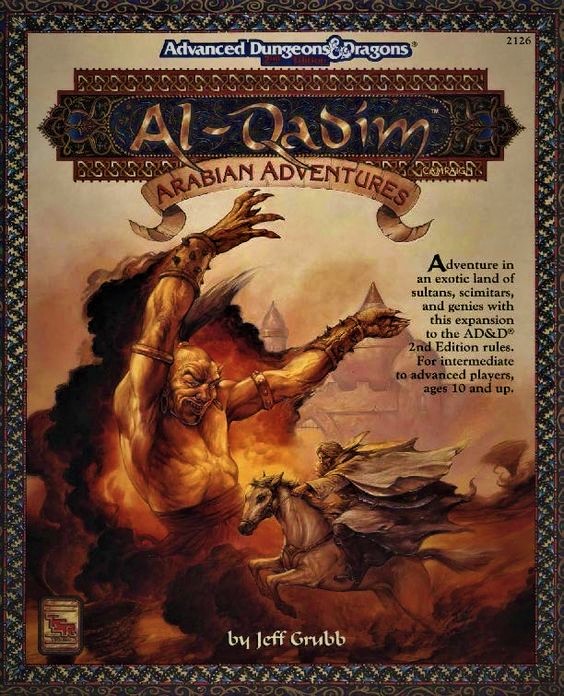
KARA-TUR /AL-QUADIM
I know these are two distinct settings, but I’ve decided to combine the two as their lineages are pretty similar. Kara-Tur began life as the ORIENTAL ADVENTURES source-book for 1st edition AD&D in 1985. In 1987 it was formally integrated into Forgotten Realms, and was revisited with some modules and a MONSTROUS COMPENDIUM in 2nd edition. It was unceremoniously replaced with Rokugan (from AEG’s Legend of the Five Rings rpg and card game) in the 3rd edition ORIENTAL ADVENTURES book. It just sits there on the far east of Faerun now (briefly mentioned in the 5E supplement, THE SWORD COAST ADVENTURER’S GUIDE).
Al-Quadim first appeared in 1992 as an Arabian flavored setting in AL-QUADIM: ARABIAN ADVENTURES. The LAND OF FATE boxed set the same year really fleshed out the setting itself. It hit pretty big, and after two years and a few supplements, it once again vanished into the ether.
These are sub settings to be sure, both under the all encompassing banner of the Forgotten Realms, and yet, I feel there’s enough distinct stuff there to warrant inclusion on this list. Kara-Tur drew inspiration from Asian folklore, with diverse influences from Feudal Japan, Imperial China, and Korean history. If you’ve ever wanted to add far-East exotic flair to your campaign, wanted to dabble in noble Samurai or stealthy Ninja, Kara-Tur was your go-to. Al-Quadim, meanwhile, took the 1001 Tales of the Arabian Nights and infused a level of high fantasy while differentiating itself with unique class kits and thematic concepts. In Al-Quadim, evil wizards, sneaky Djinn, tomb robbers and high flying adventure were the name of the game. These Arabic and Asian flavors are more than distinct enough to differentiate themselves from the Realms. If anything, landing them in Abeir-Toril muddies the waters of Faerun a little.
I’ve lumped them both together because their fates are so similar, but I’ll rank them individually, as Kara-Tur has already been at least acknowledged in fifth edition;
Likelihood of being revisited? KARA-TUR – 10 (out of 10) / AL-QUADIM – 6 (out of 10)
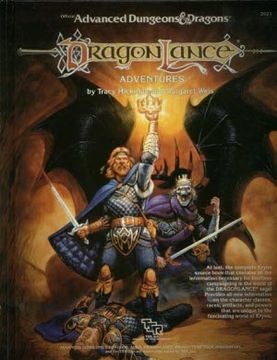
DRAGONLANCE
Honestly, does Dragonlance need any introduction? Arguably the most popular campaign setting of TSR’s golden age, Dragonlance took the dragons of Dungeons & Dragons and put them front and center, first in a series of adventures, and in 1987, in a full blown campaign setting and world atlas. The Dragonlance setting gave birth to best-selling authors, cherished characters, and a wealth of rich fantasy material. The generic “high fantasy” setting bore a trove of lore and history, with 5 full ages worth of war, magic, adventure hooks and epic characters. If FORGOTTEN REALMS was this all encompassing, all shapes and sizes, all flavors fantasy, then DRAGONLANCE narrows the focus to more Tolkien-esque fantasy familiarity but applies equal or greater attention to the world-building and the centuries of history and backstory. Epic struggles and rebellious uprisings? You got it! Ancient orders, mythical heroes, legendary weapons, awesome villains, and godlike dragons? Heck yeah!
DRAGONLANCE was last seen in 3rd edition, published by the original co-creator before the rights reverted to Wizards of the Coast. The first series of novels, Dragonlance Chronicles, remains a fan-favorite, arguably as popular, or very close to R.A. Salvatore’s Forgotten Realms stories, and there’s more than enough hard core fans out there to justify a revisit. This one might require a bit of a delicate touch, but with the right approach, you could bring back a beloved setting to experienced players, and introduce a whole new generation to the lore and majesty of Dragonlance.
Likelihood of being revisited? 9 (out of 10)
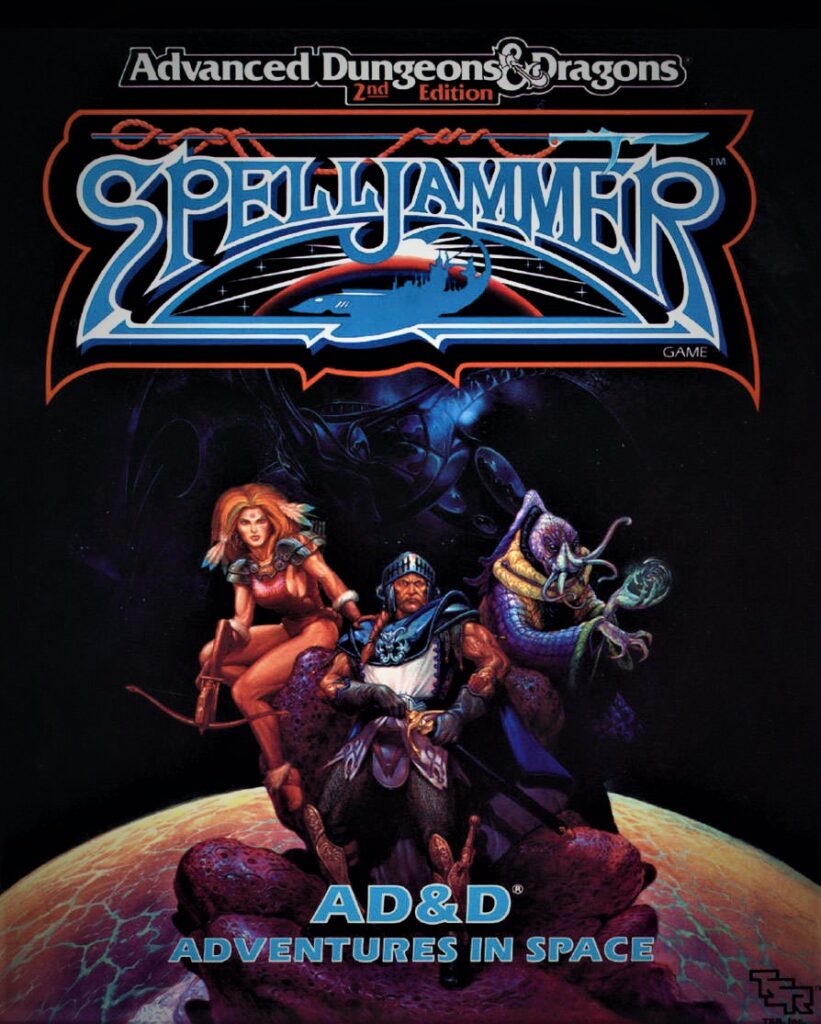
SPELLJAMMER
The first “new” setting to be introduced with the hot-off-the-press 2nd Edition in 1989 was both a fun as hell concept and a way for TSR to bring all of their previously published campaign settings together. The hook? Outer space!
Ships called Spelljammers navigate the void of space, capable of sailing between planes, and indeed the “crystal spheres” or planets, of the other big campaign settings. You want to travel from Dragonlance’s Krynn to Forgotten Realms’ Abeir-Toril? Get your hands on a Spelljammer and have a whole other campaign as you travel the void!
Colorful ships ripped out of Jules Verne, crossover potential that makes The Avengers or the Justice League look tame by comparison, and with swashbuckling adventure rather than the misty teleporting terror of Ravenloft; Spelljammer was a personal favorite. How could it not be? How could you not like villainous spider-eels who pilot vicious looking ships called Neogi Deathspiders? How could you not enjoy a setting that inspired Disney’s Treasure Planet? A setting that made sailing through the stars feel like you’re crossing the Atlantic? Laws of science be damned!
Wizards still tosses a bone or two to Spelljammer fans here and there, and at least one straight up reference in the DUNGEON OF THE MAD MAGE, though I wonder if the second weirdest setting in D&D history could actually be primed for a comeback? I feel it would certainly fit in the modern age pretty well, and there would likely be just enough creative flexibility in there to make it both faithful and fresh at the same time.
Likelihood of being revisited? 7 (out of 10)
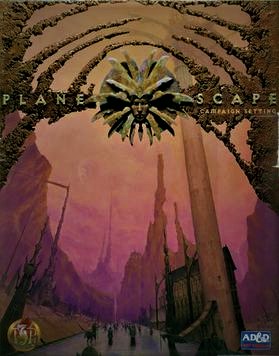
PLANESCAPE
As 2nd edition was starting to wind down, TSR had bailed on their second weirdest setting, SPELLJAMMER, only to create their weirdest. Longtime players were screaming for a return to the outer planes. Doing away with the demons and devils of the original Manual of the Outer Planes (couldn’t get caught up in another Satanic Panic, after all), TSR stepped in with PLANESCAPE in 1994.
Planescape replaced starfaring Spelljammer ships with Sigil, the city of doors, crossroads of the planes of existence. Sigil was the new bridge between worlds, players could conceivably find doorways to every other setting, or to any of the outer planes, homebrew locations, and really, whatever the heck else you want to throw at your players as an ambitious Dungeon Master.
Beyond anything else, Planescape was… weird. This was high fantasy filtered through art film existential weirdness. Lead artists Dana Knutson and Toni DiTerlizzi, unfettered from vanilla Dungeons and Dragons, helped shape a unique and vibrant world that’s really unlike anything else in the pantheon of Dungeons & Dragons campaign settings. It mixed otherworldly tribal visions with horrific imagery and truly brain bending narratives. It was everything you could want in a trip through the cosmic ethereal.
Though, if I’m totally honest, the award winning art design and existential pontificating didn’t leave a whole lot of “meat” to pin a campaign on. As a design document, Planescape was glorious, as a setting, it was a little sparse. Within the press, it was heralded and applauded, players were a little more ambivalent. The Computer RPG would become legendary, but the setting would essentially die on the vine.
Wizards of the Coast, while not explicitly stating that Planescape is still a thing, has at the very least acknowledged the existence of Sigil, the city of doors in their fifth edition material. While I wouldn’t say it’s entirely outside the realm of possibility, the tone and feel of Planescape feels quite out of step with the 21st century model of Dungeons & Dragons. I’d say it’s more likely that they’d license this out to a third party.
Likelihood of being revisited? 4 (out of 10)
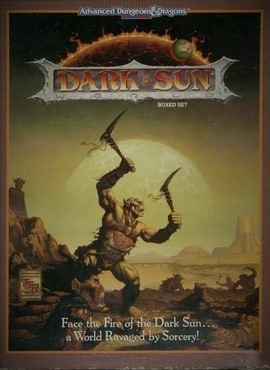
DARK SUN
Imagine if you will, a post apocalyptic, desolate world. A world forsaken by the divine, and defiled by arcane magic. This is Arthas, the setting for what was, in 1991, TSR’s most hardcore, and genre-defying campaign setting. Dark Sun was daring, forsaking Tolkien-esque tropes in favor of something more akin to Dune crossed with Conan the Barbarian and Mad Max. Divine magic was gone, as the gods of traditional Dungeons & Dragons had forsaken the world of Dark Sun, and arcane magic was outlawed, with mages placed at number one on the genocide hit-list. Sweeping changes to meta-races saw traditional Elves and Dwarves altered radically, and player choice included tribal bird men (Arakocra) and giant mantis-people (Thri-kreen). Psionic abilities would replace magic, and all characters would have some manner of Psionic abilities they could tap into. All of this was wrapped up in beautiful and highly original design by fantasy artist, Brom.
Further to these radical changes was the difficulty; Dark Sun was a gritty, brutal setting anchored in themes of survival in the aftermath of a world-ending cataclysm. Player characters started at third level, had higher stats, and previously mentioned psionic abilities, and they needed all the help they could get. Resources like metal were exceptional and ultra-rare, every town was an isolationist conclave or despot ruled city state. Dark Sun was savage. It required a more experienced touch from the DM, and a little more care from the players. This was Advanced-Advanced Dunegons & Dragons.
Dark Sun was also famous (later infamous) for being the first of the TSR settings to really lean into metaplotting; that is that published novels, adventures, and additional supplements would radically alter the world-state, the story of Arthas would progress over the years, changing the rules, altering factions and alliances, the sort of campaign building typically reserved for Dungeon Masters. The risk of foundational changes was that Dark Sun, by it’s original end in 1996, was nowhere near as cool as it had been early on.
Dark Sun was canceled suddenly in 1996, and vanished altogether, in spite of its popularity and several fan-driven efforts during 3rd edition. It wouldn’t return with the full “campaign setting” treatment until 2010 and 4th edition. It was well-received (as far as 4th edition products go), but some of its unique character had been shaved off to be sure. Wizards designers have mentioned Dark Sun as something they “will do” at some point. I’m not sure how or where it will fit into fifth edition, but honestly, It’s just such a cool concept, a perfect home for more “out there” classes, psionics, and mystics, and it would really fit well into the current era. I wouldn’t be at all surprised to see it popping up again.
Likelihood of being revisited? 8 (out of 10)
So there it is; a thorough, if not entirely exhaustive list of potential campaign settings for your Dunegons and/or Dragons. A diverse, and disparate collection of settings from the wonderfully old-school Dragonlance to the pulpy Mystara, to the truly fantastical Spelljammer, the mind-bendingly weird Planescape, and all shapes and sizes of flavor in between! Which of them appeals the most? Which would you foresee your players diving headlong into? Which would you love to see make a triumphant comeback? Which do you feel is more likely? Let me know!
Personally, I’d kill for Dark Sun, Spelljammer, and Dragonlance in that order.
Until next time,
Steve
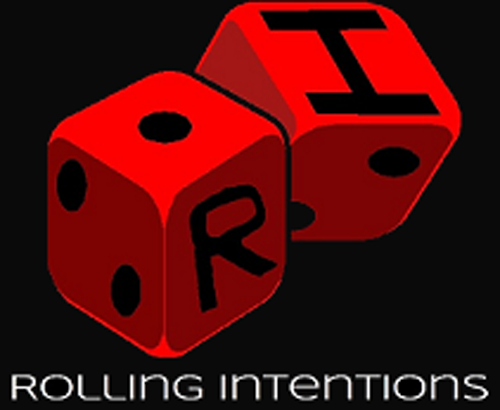
I am surprised that imaginative DMs wouldn’t just grab the settings and scenarios from earlier d & D versions and just creatively substitute v5 classes and critters for earlier ones? Or are the systems just too hard to rebalance? I admit I am way out of touch!
Hey David!
A lot of home brew does exist out there, particularly where DARK SUN is concerned (www.athas.org). I’ve heard rumblings in the past about Spelljammer and Planescape, but I haven’t seen any substantial efforts first hand.
The biggest issue with TSR/Wizards material is that it’s generally a LOT of information, a lot of rules to adjust and balance to very different systems (the shift from 2nd to 3rd edition was particularly intense). I could see 3rd edition material being fairly easy to port forward to 4th or 5th, but many of these settings haven’t been seen in any capacity since 2nd. The big outliers, Dragonlance and Dark Sun, both did see revisions (Dragonlance in 3E, Dark Sun in 4E) but I cal them outliers because Dragonlance is almost entirely built on its historical lore, and Dark Sun is just such a curveball from regular DND, that both would be something of a chore to home brew on the same level as the official publications. Your mileage may vary of course.
In the very early internet days, the fan sites and message boards operated at such high capacity that TSR actually attempted to shut some of them down.
I use to play D&D Birthright quite a bit in the day. It was a different type of RPG where you play as a reagent vs the normal adventurer. Wish they re-did it.
Somebody had to! 😂
Seriously though, the concept behind Birthright was sound, and that artwork was pretty beautiful, but it lacked the depth that really makes a stand out setting. It fared much better as a collection of character kits or concepts than as a campaign world. They could have handled it better, as they DID have pitched battles and tactical army combat to plug into ye olde 2nd Edition. It cried out for that faux leather cover – the guide to Kings and Queens or something, rather than the full-on “boxed campaign setting” treatment it actually got.